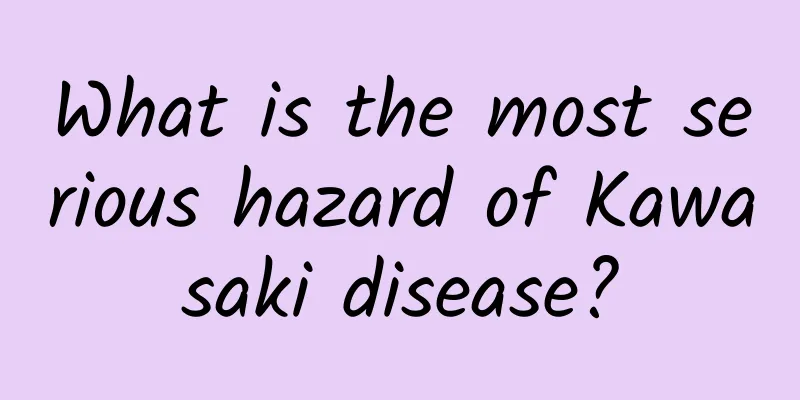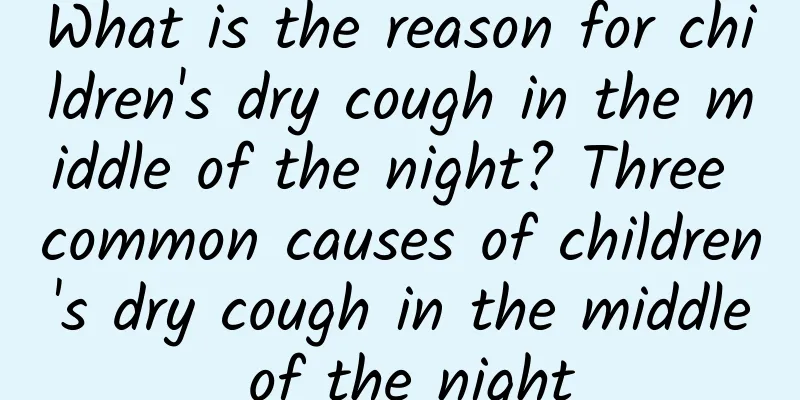What is the most serious hazard of Kawasaki disease?

|
Many parents lack a correct understanding of their children's health, which leads to the inability to properly treat their children when they have some medical problems. Kawasaki disease is such a disease, which causes a lot of harm to their health. So what is the most serious harm of Kawasaki disease? Here is a brief introduction for you. Kawasaki disease is a vasculitis syndrome, also known as mucocutaneous lymph node syndrome, which is common in children aged 2-4 years, and is more common in boys. In recent years, the incidence has increased. The biggest harm of Kawasaki disease is damage to the coronary arteries. It is the main cause of coronary artery disease in children and a potential risk factor for coronary heart disease in adulthood. In my country, the incidence is more common from July to September. Therefore, parents should be particularly vigilant about Kawasaki disease in infants and young children at the turn of summer and autumn. Children usually have prodromal symptoms such as upper respiratory tract infection before the onset of the disease. Continuous high fever for 1-2 weeks, conjunctival congestion of both eyes, chapped and bleeding lips, congestion of oral mucosa, mulberry-like tongue surface, rash with various forms all over the body, hard edema and flushing of hands and feet, and swollen cervical lymph nodes. After the above symptoms subside, characteristic membrane-like peeling may appear at the junction of the nails and skin at the ends of the fingers and toes, and peeling may also be seen around the anus. Some children with Kawasaki disease may suffer from multiple organ damages such as heart, brain, liver, lung, and kidney. Among them, cardiovascular damage is the most prominent, mostly occurring 2-3 weeks after onset and can last for months to years. Types of cardiovascular damage complicated by Kawasaki disease include coronary artery aneurysms, coronary artery dilatation, coronary artery stenosis or occlusion, etc. Aneurysms can be single or multiple, and most of them can disappear within 1-2 years, but local fibrosis of the vessel wall can promote intimal hyperplasia, resulting in ineffective expansion of the coronary artery. In severe cases, thrombosis, lumen stenosis and occlusion, and even myocardial infarction can be formed. It can also lead to severe symptoms of cardiac ischemia or develop into ischemic heart disease, which is the main cause of death from Kawasaki disease. Kawasaki disease is so harmful that parents should take their children to the hospital in time when they have fever, rash, mucosal damage, and swollen lymph nodes. Since the cause of Kawasaki disease is not very clear, there is no good measure to prevent its onset. However, since most children have upper respiratory tract infections before the onset of the disease, upper respiratory tract infections should be avoided as much as possible during the turn of summer and autumn. Regardless of whether children with Kawasaki disease have coronary artery disease or not, they should pay attention to the rationality of their diet and try to avoid hyperlipidemia and hypertension to reduce the risk of coronary heart disease when they grow up. In addition, the recurrence rate of children who have suffered from Kawasaki disease is 1% to 3%, so it should not be taken lightly. Usually, you should pay attention to catching fewer colds to avoid recurrence. |
<<: Introduction to the latest progress in the treatment of Kawasaki disease
>>: What are the diagnostic tools for Kawasaki disease?
Recommend
Is it normal for a child to cough when he has chickenpox?
Whether it is normal for a child to cough when ha...
Can people with hand, foot and mouth disease eat shrimp?
Patients with hand, foot and mouth disease can ge...
What are the traditional Chinese medicines for treating pneumonia in children?
Traditional Chinese medicine for the treatment of...
How to prevent neonatal jaundice during pregnancy
However, good eating and living habits during pre...
What are the symptoms of pneumonia in children? Two symptoms of pneumonia in children
1. Fever The most common symptom of pneumonia in ...
Is mumps contagious in children?
Mumps is contagious and is mainly spread through ...
How much does it cost to cure diarrhea in children?
How much does it cost to cure diarrhea in childre...
What causes hand, foot and mouth disease and how to treat it
Hand, foot and mouth disease is an infectious dis...
Four major hazards of phenylketonuria to the human body
Phenylketonuria is a disease that is very harmful...
The best treatment for hand, foot and mouth disease
There is usually no optimal treatment for hand, f...
Diarrhea examination items for children
Children are the treasures of every family. Paren...
What should I do if my baby has a hoarse voice? How should I treat my baby's hoarse voice?
If the baby is in a bad mood, he may cry, and if ...
Is patent ductus arteriosus normal in newborns?
Patent ductus arteriosus in newborns is a common ...
Items to be checked for children with mumps
Children with mumps need to be checked for items....
How to cure pneumonia in children
Neonatal pneumonia is a very common disease. The ...









